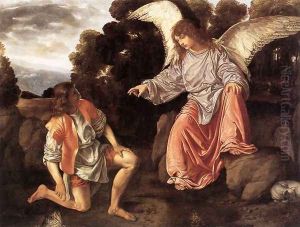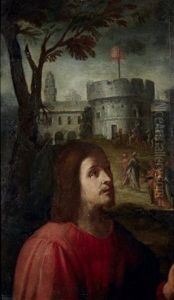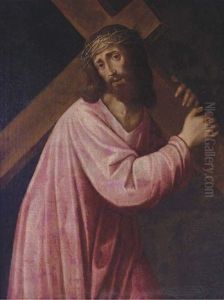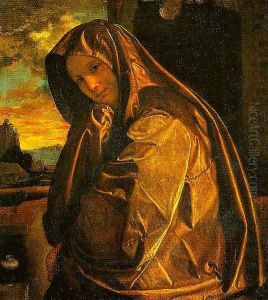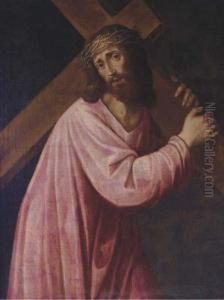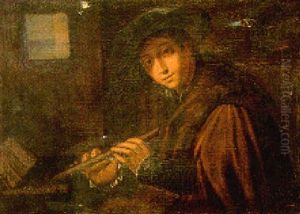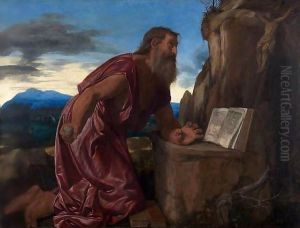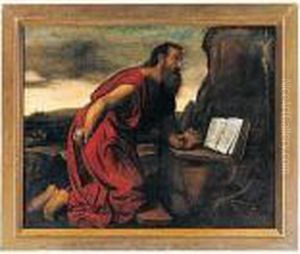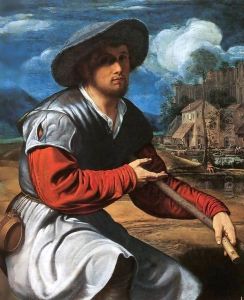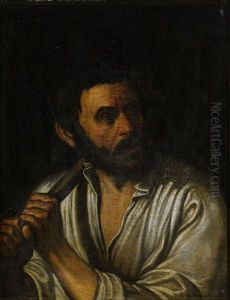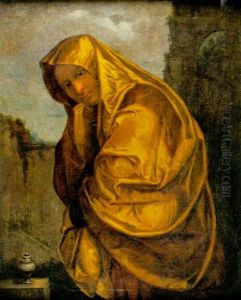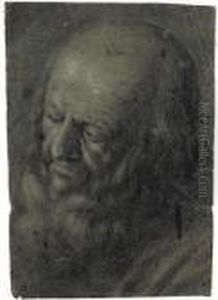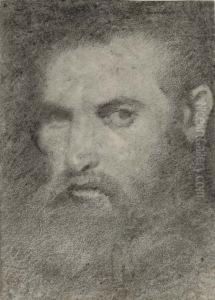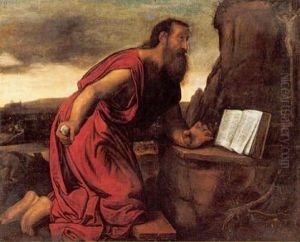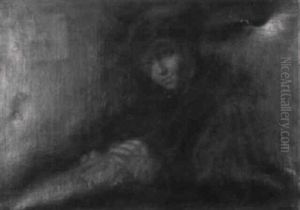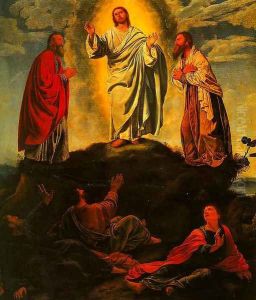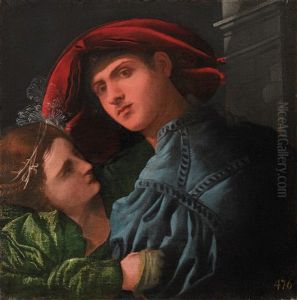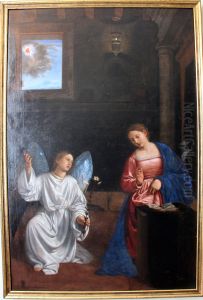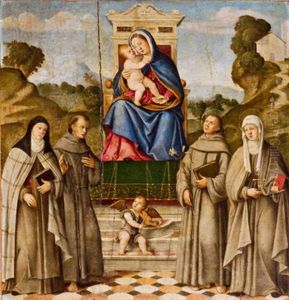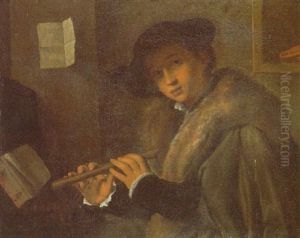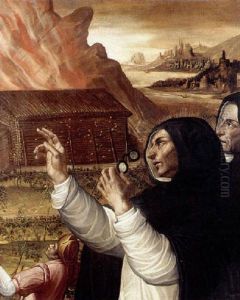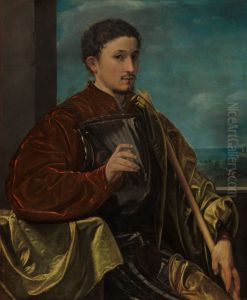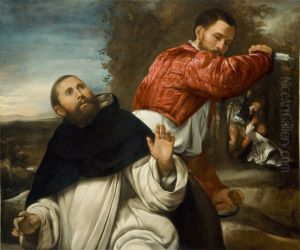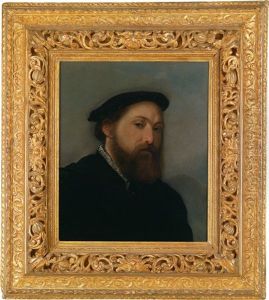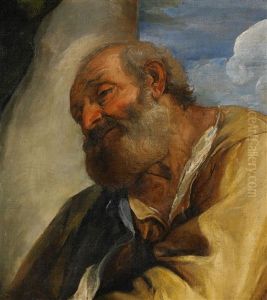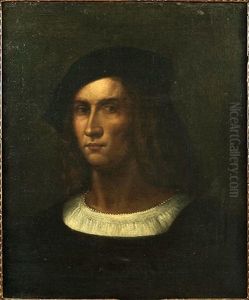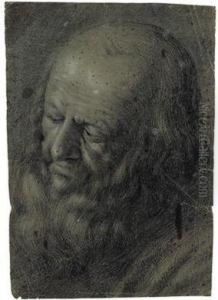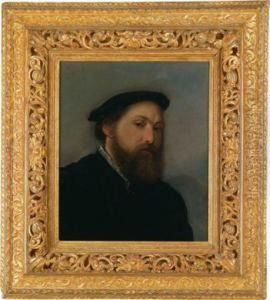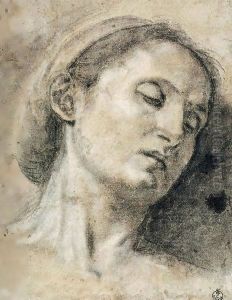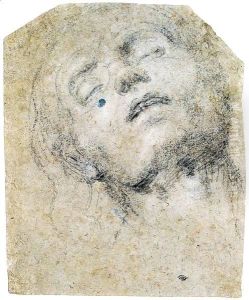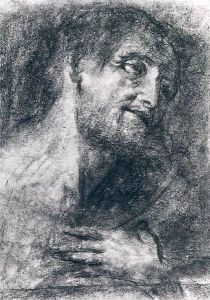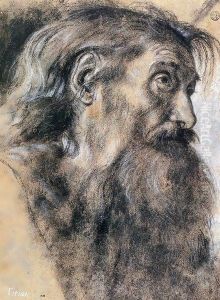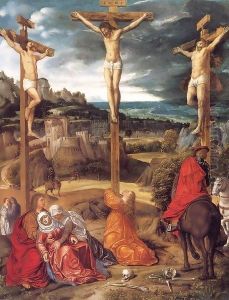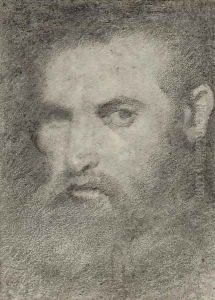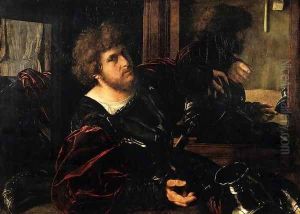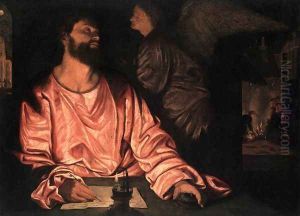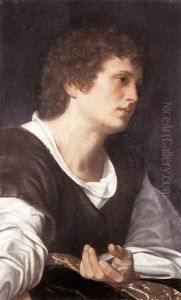Giovanni Girolamo Savoldo Paintings
Giovanni Girolamo Savoldo, also known as Girolamo da Brescia, was an Italian High Renaissance painter known for his subtle use of color and light and for his quiet, reflective compositions. He was born around 1480 in Brescia, in the Lombardy region of Italy, and is often associated with the Venetian school due to his stylistic tendencies and influences.
Savoldo's early life and training are not well-documented, but it is believed that he studied in his hometown of Brescia before moving to Parma and then to Venice. His work was influenced by the likes of Giorgione and early Titian, and it is characterized by its sophisticated use of chiaroscuro and atmospheric effects. Despite his connection to Venice, Savoldo maintained a distinctive style, characterized by a certain austerity and an almost modern psychological insight into his subjects.
Savoldo's oeuvre includes religious subjects, portraits, and genre scenes. Among his most famous works are 'The Adoration of the Shepherds', 'Mary Magdalene', and 'Saint Matthew and the Angel'. His paintings often feature solitary figures set against dark, brooding landscapes or interiors. His figures are rendered with a naturalistic detail, and he had a particular talent for depicting different textures, from the rich fabrics of clothing to the soft glow of skin.
Although his works were sought after during his lifetime, Savoldo did not enjoy widespread fame. His patrons included nobility and religious institutions, but he seemed to avoid the limelight. Records from 1548 suggest that he was still alive, but his date of death is unknown. After his time, Savoldo's work was somewhat forgotten until the 19th century, when his paintings were rediscovered and appreciated for their quiet beauty and emotional depth.
Today, Savoldo is recognized as an important figure in the landscape of Renaissance painting, with his works held in major museums worldwide. His contributions to the use of light and atmosphere would influence later artists, and his unique approach to his subjects continues to be studied and admired.
